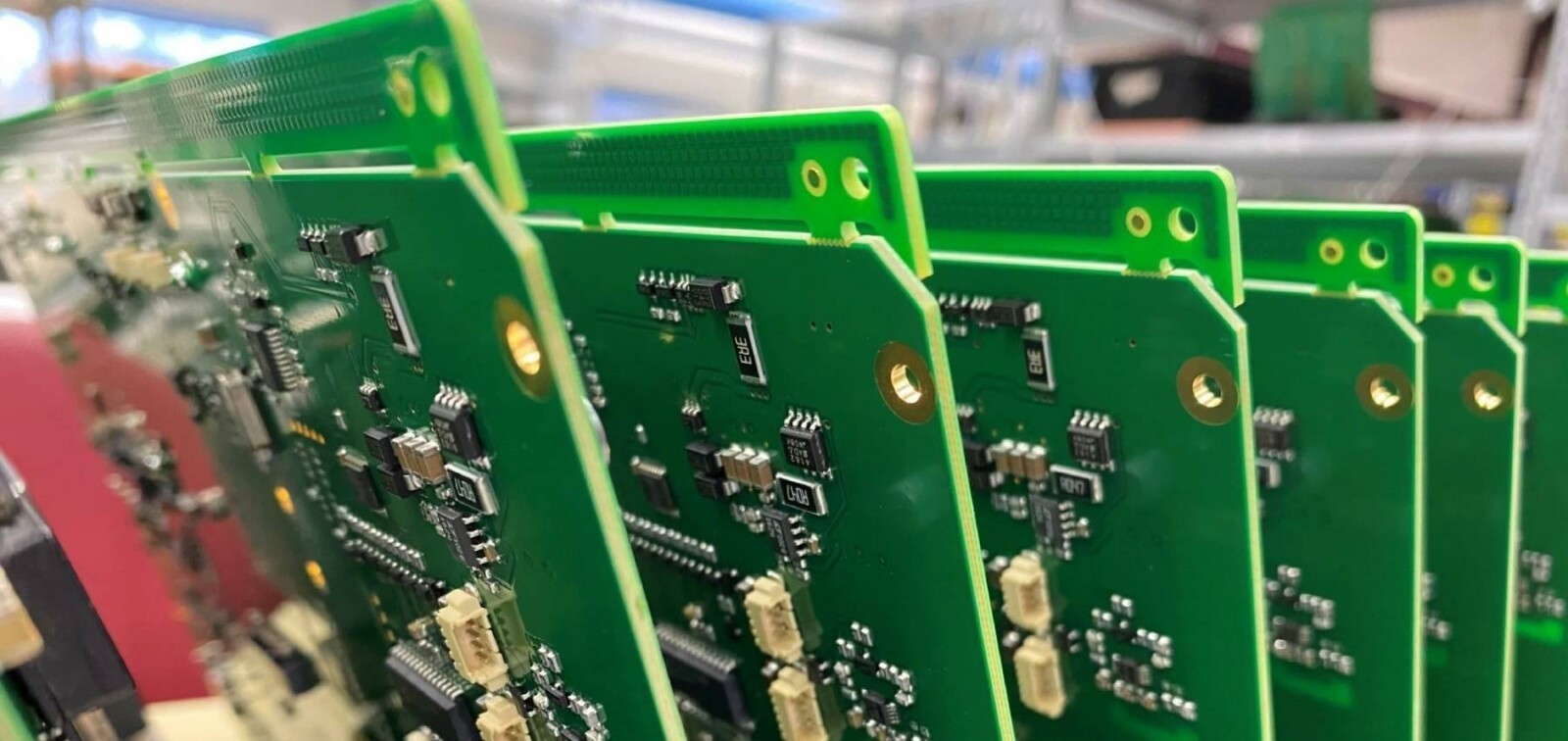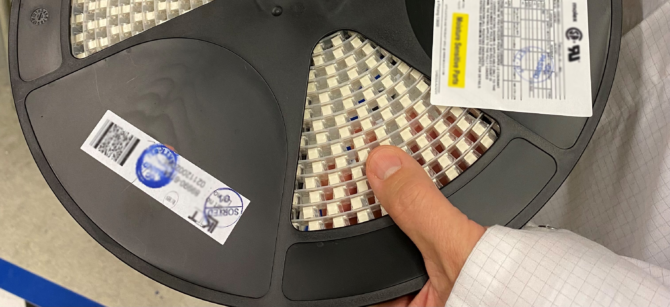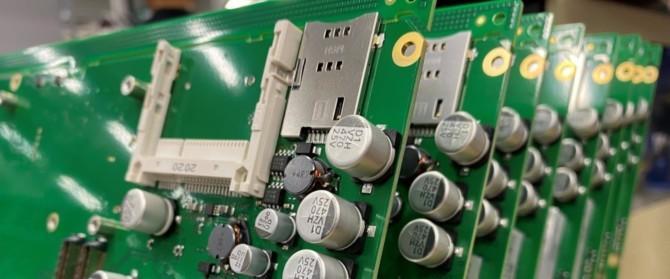
Short on components but not on solutions for your business
How does an operations manager keep his cool when a pandemic and component shortage are doing their level best to disrupt… everything? He talks to his colleagues, his suppliers and his customers. Just as importantly, he listens to them too.
Hannes Beckerin, Operations Manager, JLT Mobile Computers
If I was to tell you that I had a comprehensive pandemic plan in place at the start of 2020, you’d be perfectly within your rights to ask me if I was being 100 % truthful. In fact, you’d be wise to question anyone whose job involves sourcing components if they claimed the same thing.
Covid remains a once-in-a-lifetime event that has affected every single facet of society. The additional problem for me however – with my operations hat on – is that Covid also helped create a once-in-a-lifetime (I hope) chip shortage; the effects of which we are unfortunately going to feel for the next few years.
Contingencies are a part of my working life. I am used to small, one-off shipping delays, staff going sick or machines being offline. But a global pandemic and a worldwide component shortage were certainly not in the textbooks. So, like a lot of companies we had to think quick and improvise like never before to make sure our – and more importantly our customer’s – operations remained… operational.
Let’s take a look at the technology. As it stands, chip demand is currently surpassing capacity, in terms of both their manufacture and the logistics to get them where they need to be. But exactly what caused this massive shortage? Well, it’s an unfortunate combination of unrelated factors (which is why it caught everyone by surprise).

Components on a reel
It sounds like the plot of a disaster movie, but here we go.
First you compound a global pandemic with hastily deployed downwards forecasts from the automotive industry, which are very quickly revised back up again. Add a massive upsurge in the worldwide demand for webcams, headsets, and work-from-home computers, shipping containers in the wrong place and grounded cargo flights. Sprinkle with a healthy dose of IoT and the need for basic ICs in everything. Chuck in wafer-production issues, a factory fire in Japan, a storm in Texas and a drought in Taiwan and then introduce a heady mix of tit-for-tat politics between two superpowers… and voila, you have your chip shortage.
We weren’t completely caught off guard; we knew there would be issues during the pandemic, it was just the scale of this particular issue that set it apart from all the others. But I think a combination of factors that underpin the way that JLT is wired – as a company and as a group of employees – that has helped us weather this storm rather well. So far, it’s been business as normal, but the crisis is far from over.
So, what did we do well? Firstly, we don’t do just-in-time (JIT).
JIT fits the right contemporary setting (albeit being challenged by many experts); but we have always had a strategy of holding enough stock based on normal lead times. And in February this year we adapted our sourcing strategy and have continuously done so to meet high production demands. Indeed, for some components we now hold stock four to six times longer than we did previously. We are, in fact, constantly adapting these levels based on market forecasts. Fortunately, our healthy financial position gives us this flexibility.
The other capability that has helped us to level the playing field is our in-house development team, which has been magnificent. Some suppliers have chosen to shut down some of their less-profitable production runs, citing Covid as an excuse. This may make sense for them financially, but it might be a factory that makes a component we rely on. In other instances, the law of supply and demand has pushed lead times and costs through the roof. We had one supplier push a delivery window from April 2021 to July 2022. To get these components before July 2022, we would have to pay more than 50 times the original price! We need thousands of these things, so this was not ideal.

PCB (Printed Circuit Board) in green. With mounted components, they can be referred to as a: PCBA (Printed Circuit Board Assembly); Carrier Board; I/O Board (Input/Output) or if there is a CPU (Central Processing Unit) soldered on the board, a Mother Board.
What could we do? My office is next door to the R&D team, and we chat whenever we need to.
Every time this sort of thing happens, we look at the ripple effects, with one of the questions being “do we need to design our way out of this supply issue?” In this case the answer was yes. The part in question was an element in our audio module, which we have since redesigned to exploit parts we know we can source… and not at 50 times the price!
But honestly, it hasn’t all been a bed of roses. Before summer we successfully executed all of our orders – thanks to our stockpile – and we saw the effects of people returning to work as our quarterly sales rose. However, in August we faced a few stock issues and September saw our delivery promise being stretched a bit thin. Overall, the general production schedule was good though.
Right now, we are 85% secured, but like everyone else in the industry, processor chips are the problem. We know this because one global supplier is talking to us. But other processor manufacturers aren’t, and we know they’ve got it even worse. We are looking at alternatives thanks to our development team; and fortunately, we are big enough to get a decent amount of attention from our suppliers.
It’s this communication that has been the lynch pin of our success. Industry 4.0 may have every device talking to each other, but what you also need is every person talking to each other – internally and externally. I can speak to my R&D manager any time; I also speak to customers and suppliers every day. It really is essential. In my opinion, a phone call garners a better and more dynamic response than an email, and it’s these conversations that have allowed the issues to be solved.
It’s good to talk. In fact, it’s essential!
Some people I know who have been in this industry for over 30 years, have never seen a storm quite like this. And it’s not going to go away overnight. My advice is to put your eggs into more baskets, trust your engineers, plan for the worst and, above all, talk to people! Stabilization may take a while, but agility and conversation will conquer everything.

Hannes Beckerin, Operations Manager, JLT Mobile Computers
Our determination to help our customers succeed is at the core of everything we do. Why not see how we can go the extra mile for you! Let’s have a conversation that will give you peace of mind.
Want to learn more?
We’re here to help and advise you on every aspect of rugged devices and industry data communications.
Please fill in the form and we will get back to you as soon as possible.

